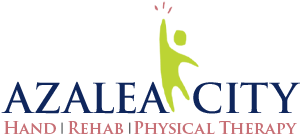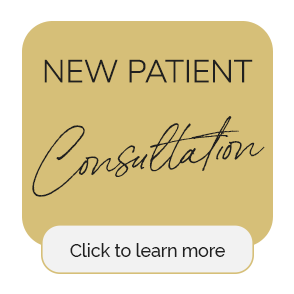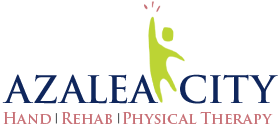Mastering ACL Surgery Physical Therapy/Occupational Therapy In Mobile AL

Recovering from anterior cruciate ligament (ACL) reconstruction surgery can be a long and challenging journey. But with the right physical therapy/occupational therapy plan in Mobile AL, it's entirely possible to regain full mobility and return to the activities you love. Whether you're an athlete or simply looking to restore your day-to-day movements, this guide from Azalea City Hand and Rehab and Physical Therapy breaks down each step of the process, providing key insights into how to navigate recovery and get back to your normal routine.
What Is ACL Reconstruction In Mobile AL?
ACL reconstruction is a surgical procedure that repairs a torn anterior cruciate ligament in the knee. This injury is common among athletes, but anyone can experience it due to sudden movements, falls, or twists. After the surgery, rehabilitation is crucial to help heal the ligament, strengthen the surrounding muscles, and restore mobility.
The Importance Of A Physical Therapy/Occupational Therapy Program In Mobile AL
Rehabilitation after ACL reconstruction isn't a one-size-fits-all process. It's personalized based on your needs, healing rate, and the recommendations of your surgeon and physical therapist. A structured, time-based rehabilitation plan that also considers your specific progress will ensure your recovery is safe and effective.
Not following the proper guidelines could lead to re-injury or delayed recovery. Remember, patience and persistence are key during this time.
Phase 1: Immediate Post-Surgery (0-2 Weeks)
In this early phase, the primary goal is to protect your knee and prevent further injury. You'll also focus on reducing swelling, managing pain, and gently starting to restore knee mobility.
Key Rehabilitation Goals:
- Protect the surgical graft
- Control pain and swelling
- Achieve full knee extension
- Begin light strengthening exercises, focusing on quadriceps control
Post-Surgery Tips:
- Keep your knee elevated and straight when lying down.
- Avoid placing pillows or towels under the knee, as this can prevent proper extension.
- Use crutches and a knee brace as directed by your surgeon.
- Gradually increase weight-bearing as your strength improves, but avoid excessive pressure on the knee.
Exercises:
- Patellar mobilizations to restore mobility
- Ankle pumps to improve circulation
- Gentle knee extensions and flexions with assistance
Phase 2: Intermediate Post-Surgery (3-5 Weeks)
As you move into this phase, your focus will shift to restoring more of your knee's range of motion and improving your walking gait.
Rehabilitation Goals:
- Protect the ACL graft
- Normalize your gait (how you walk)
- Gradually restore full knee flexion and extension
Recommended Exercises:
- Gentle stationary cycling to promote range of motion
- Strengthening exercises such as calf raises and leg presses
- Step-ups and bodyweight squats to engage your quads and glutes
Important Tip:
It's normal to feel some stiffness, but avoid pushing your knee too far. Flexibility will return with consistent, gentle effort.
Phase 3: Late Post-Surgery (6-8 Weeks)
By now, your knee should be gaining strength and flexibility, and you're ready to introduce more advanced exercises to safely build strength.
Rehabilitation Goals:
- Safely progress your strength and endurance
- Maintain proper movement patterns
- Protect the graft site and avoid post-exercise pain
Recommended Exercises:
- Elliptical machine or stair climbing for low-impact cardio
- Squats, lunges, and step-ups with increased resistance
- Lateral lunges and deadlifts for core and hip strength
Phase 4: Preparing for Sport-Specific Training (9-12 Weeks)
Now, you're getting closer to returning to your sport or active lifestyle. This phase focuses on sport-specific movements to prepare you for the next step.
Rehabilitation Goals:
- Begin light, sport-specific exercises (e.g., jogging, lateral movements)
- Safely progress to plyometric exercises, such as jumping and landing drills
Exercises:
- Jumping on and off boxes to improve agility
- Lateral step-overs and single-leg hops
- Strengthening exercises like Romanian deadlifts
Note:
At this stage, it's important to listen to your body. Avoid exercises that cause pain at the graft site or swelling.
Phase 5: Return to Sport (3-5 Months)
At this point, you're preparing to return to full sport-specific training. Your rehabilitation will focus on increasing intensity, endurance, and coordination.
Rehabilitation Goals:
- Safely introduce sport-specific drills like sprinting and agility
- Avoid pain or swelling after training sessions
Advanced Exercises:
- Running drills and agility ladder exercises
- Plyometric drills such as bounding and lateral hops
- Multi-plane movements like cutting and pivoting
Key Tip:
Ensure that you've met all the strength and flexibility criteria from your physical therapist or surgeon before fully returning to sports. Rushing the process could lead to setbacks.
Rehabilitating from ACL surgery requires dedication, but with a solid physical therapy/occupational therapy plan, it's possible to fully regain function and return to your favorite activities. Each phase builds on the last, ensuring you're progressing safely and steadily. Always consult with your surgeon or physical therapist if you encounter any issues along the way.
This is your journey back to health so don't wait-schedule an appointment with a physical therapist at Azalea City Hand and Rehab and Physical Therapy today and start your journey toward full recovery.
OFFICE HOURS
Monday
8:00am - 5:00pm
Tuesday
8:00am - 5:00pm
Wednesday
8:00am - 5:00pm
Thursday
8:00am - 5:00pm
Friday
8:00am - 12:00pm
Saturday & Sunday
Closed
Azalea City Hand and Rehab and Physical Therapy
316 S Sage Ave Ste C
Mobile, AL 36606


